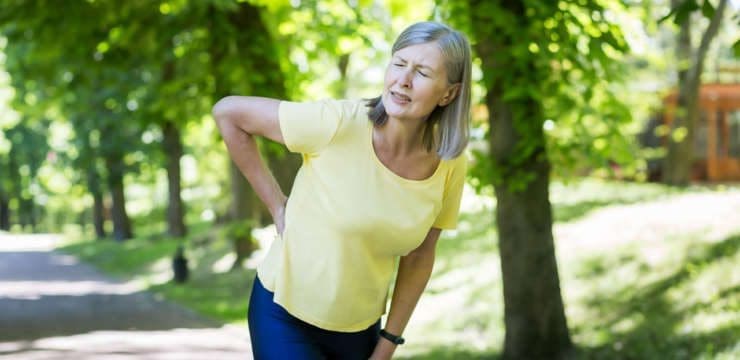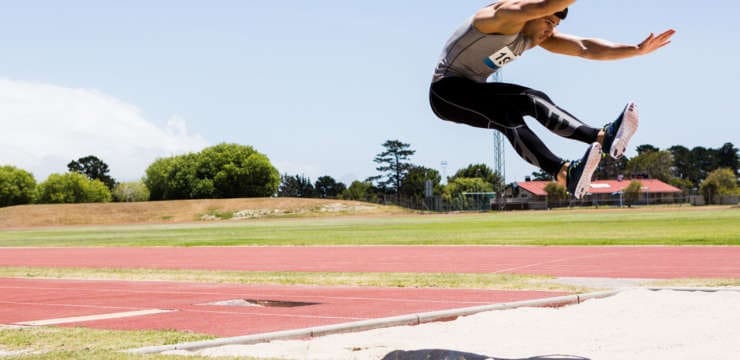
Walking for a healthy back. This simple form of exercise can:
- Trim the waistline.
- Elevate mood.
- Reduce the risk of chronic disease.
- Improve back health.
Chiropractors recommend walking because of the ease of the workout and the health benefits it provides. It is a simple, low-impact exercise that can significantly improve the body’s overall health in a short amount of time. It improves back health by:
- Strengthening the muscles that support the spine.
- Improves posture.
- Facilitates strong circulation.
- Improves bone strength.
Table of Contents
Walking For A Healthy Back
Strengthens Muscles
- Walking engages all of the muscles which keep the body upright, including the core, leg, and back muscles. Muscle strength increases, providing optimal support of the spine.
Optimize Bone Health
- Bone is living tissue like the muscles, and exercise stimulates bone the same way as muscle, gradually increasing strength.
- Studies have found that walking improves bone density and reduces bone loss.
- Walking also helps reduce the risk of degenerative bone diseases.
Posture Improves
- Poor posture is one of the most common reasons why individuals have back pain.
- Poor posture affects mobility and places a significant amount of strain on the back.
- Walking a few times each week engages and strengthens the back muscles keeping the body straight.
Reduces Weight
- Many individuals have lower back pain that is caused by excess weight.
- The added weight causes the front of the body to shift forward, placing additional strain on the lower back.
- Walking reduces the load on the lower back.
Improves Flexibility and Range of Motion
- Combined with stretching, walking improves flexibility and range of motion, making it easier to perform everyday activities reducing the risk of back injuries.
Improves Circulation to the Spinal structures
- Walking improves blood circulation, delivers nutrients to the soft tissues, and removes toxins.
Added Benefits include:
- Stress relief.
- Better sleep.
- Improved skin tone.
- Lower risk of diabetes.
- Reduced risk of depression.
- Improved cardiovascular health that lowers the risk of:
- High blood pressure.
- Heart disease.
- Stroke.
Before Exercising
Before beginning an exercise program, it’s essential to consult a doctor or chiropractor for individuals that have not exercised for a while or are dealing with underlying condition/s. They will educate and recommend how much exercise is appropriate given their current fitness level and overall health. To maximize the benefits of walking and prevent injuries:
Use High-Quality Tennis or Walking Shoes
- Walking is much more enjoyable and safer when the body is comfortable.
- Improving comfort levels is by using a pair of high-quality walking shoes or trainers.
- They will provide proper support, cushioning, and adequate traction.
Maintain Proper Posture
Stay aware of body position when walking. A few key points to keep in mind:
- Place the heel down first.
- Then roll through each part of the foot, ending on the point of the toes.
- Keep the shoulders back and head up.
- Lift from the hips to reduce the impact on the lower joints.
- Keep a slight bend in the arms and smoothly swing them back and forth.
Turn Walking Into a Healthy Habit
- In the beginning, aim for at least 5 to 7 walks each week that last 25 minutes.
- Speed does not matter as the objective is to get out and walk.
- Once walking starts turning into a healthy habit with improvements in health, then start walking faster and longer.
Interval Walking
- Interval walking involves short periods of high-intensity walking followed by a longer period of slow walking.
- This increases cardiovascular fitness and muscle strength.
- Begin with a 1-minute interval of fast walking.
- This is followed by 2 minutes of slower walking.
Take On Easy Obstacles
- Makes the walks more challenging by walking up or down a hill.
- Walk over objects like tree stumps or rocks.
- This increases calorie burn.
Add Hand or Leg Weights
- Increase workout intensity by adding leg or hand weights.
- They will help strengthen the arms, shoulders, and upper back.
Body Composition
Building Lean Body Mass
Lean Body Mass is the body’s total weight minus the fat. This includes all the weight of the muscles, organs, and total body water. The best way to develop muscle and Lean Body Mass is to adopt a resistance training program. As stronger muscles are developed, the size and amount of the muscle cells increases. The muscles then require more intracellular water, which allows them to function at optimal levels. As the muscles grow and take in more water, Lean Body Mass increases.
References
Morris, J N, and A E Hardman. “Walking to health.” Sports medicine (Auckland, N.Z.) vol. 23,5 (1997): 306-32. doi:10.2165/00007256-199723050-00004
Nauman, Javaid et al. “Walking in the Fast Lane: High-Intensity Walking for Improved Fitness and Health Outcomes.” Mayo Clinic proceedings vol. 94,12 (2019): 2378-2380. doi:10.1016/j.mayocp.2019.10.020
Vanti, Carla et al. “The effectiveness of walking versus exercise on pain and function in chronic low back pain: a systematic review and meta-analysis of randomized trials.” Disability and rehabilitation vol. 41,6 (2019): 622-632. doi:10.1080/09638288.2017.1410730
Disclaimers
Professional Scope of Practice *
The information herein on "Walking For A Healthy Back" is not intended to replace a one-on-one relationship with a qualified health care professional or licensed physician and is not medical advice. We encourage you to make healthcare decisions based on your research and partnership with a qualified healthcare professional.
Blog Information & Scope Discussions
Welcome to El Paso's wellness blog, where Dr. Alex Jimenez, DC, FNP-C, a board-certified Family Practice Nurse Practitioner (FNP-C) and Chiropractor (DC), presents insights on how our team is dedicated to holistic healing and personalized care. Our practice aligns with evidence-based treatment protocols inspired by integrative medicine principles, similar to those found on dralexjimenez.com, focusing on restoring health naturally for patients of all ages.
Our areas of chiropractic practice include Wellness & Nutrition, Chronic Pain, Personal Injury, Auto Accident Care, Work Injuries, Back Injury, Low Back Pain, Neck Pain, Migraine Headaches, Sports Injuries, Severe Sciatica, Scoliosis, Complex Herniated Discs, Fibromyalgia, Chronic Pain, Complex Injuries, Stress Management, Functional Medicine Treatments, and in-scope care protocols.
Our information scope is limited to chiropractic, musculoskeletal, physical medicine, wellness, contributing etiological viscerosomatic disturbances within clinical presentations, associated somato-visceral reflex clinical dynamics, subluxation complexes, sensitive health issues, and functional medicine articles, topics, and discussions.
We provide and present clinical collaboration with specialists from various disciplines. Each specialist is governed by their professional scope of practice and their jurisdiction of licensure. We use functional health & wellness protocols to treat and support care for the injuries or disorders of the musculoskeletal system.
Our videos, posts, topics, subjects, and insights cover clinical matters, issues, and topics that relate to and directly or indirectly support our clinical scope of practice.*
Our office has reasonably attempted to provide supportive citations and has identified the relevant research studies or studies supporting our posts. We provide copies of supporting research studies available to regulatory boards and the public upon request.
We understand that we cover matters that require an additional explanation of how they may assist in a particular care plan or treatment protocol; therefore, to discuss the subject matter above further, please feel free to ask Dr. Alex Jimenez, DC, APRN, FNP-BC, or contact us at 915-850-0900.
We are here to help you and your family.
Blessings
Dr. Alex Jimenez DC, MSACP, APRN, FNP-BC*, CCST, IFMCP, CFMP, ATN
email: coach@elpasofunctionalmedicine.com
Licensed as a Doctor of Chiropractic (DC) in Texas & New Mexico*
Texas DC License # TX5807
New Mexico DC License # NM-DC2182
Licensed as a Registered Nurse (RN*) in Texas & Multistate
Texas RN License # 1191402
ANCC FNP-BC: Board Certified Nurse Practitioner*
Compact Status: Multi-State License: Authorized to Practice in 40 States*
Graduate with Honors: ICHS: MSN-FNP (Family Nurse Practitioner Program)
Degree Granted. Master's in Family Practice MSN Diploma (Cum Laude)
Dr. Alex Jimenez, DC, APRN, FNP-BC*, CFMP, IFMCP, ATN, CCST
My Digital Business Card







